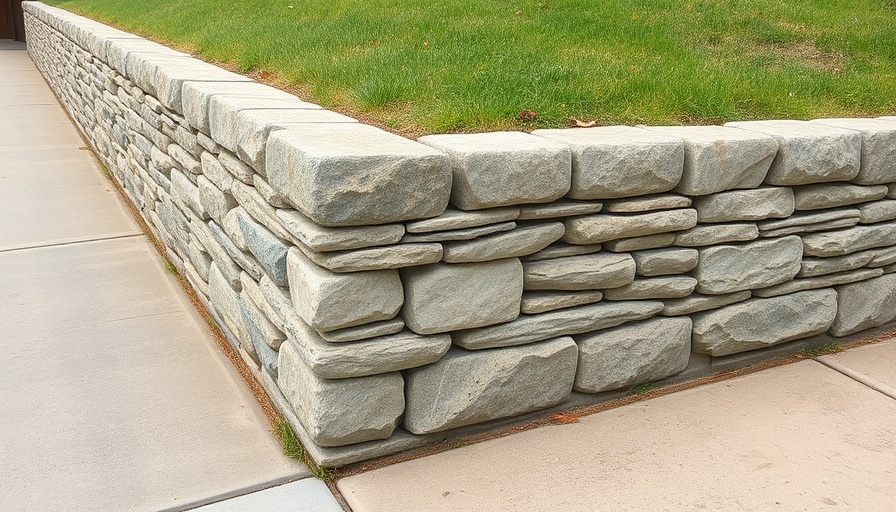
Understanding the Importance of Retaining Walls
Retaining walls play a vital role in managing soil and preventing erosion, especially in hilly areas where terrain alteration is common. Without them, properties face the risk of soil collapse, leading to costly damages. Have you ever noticed how some homes have beautifully designed retaining walls while others seem to be teetering on the edge of disaster? The integrity of these walls can significantly impact property value and safety.
Why Do Retaining Walls Fail?
Let's delve into the reason behind the failure of retaining walls. The leading culprit? Improper drainage. When water is trapped behind a retaining wall, the pressure can become overwhelming. According to engineer Jakob Walter, “A well-designed wall should account for the weight of wet soil, especially in regions that experience freezing.” Homeowners sometimes fail to consider this in their designs, leading to disastrous consequences. Thus, understanding soil behavior and incorporating effective drainage solutions are essential for any retaining wall project.
Preventative Measures: Building Better Retaining Walls
The best way to avoid the headaches of a collapsing retaining wall starts long before any construction begins. Ensure you're working with experts who understand the nuances of soil composition and water management. “When constructing a retaining wall, ensure there's a drainage system in place. Optional weep holes or gravel backfill can effectively help drain excess water,” suggests Hayden Slack, owner of G.L. Hunt Foundation Repair. By investing in thoughtful design and implementation, homeowners can ensure longevity and stability.
What To Do If Your Wall Is Showing Signs of Distress
If you notice cracks, bulges, or leaning, it’s time to act. “Monitor your wall regularly, especially after heavy rains or snow. If you see significant changes, consult a structural engineer immediately,” advises contractor Yaeir Moinzadeh. Swift action can prevent minor issues from becoming monumental repairs.
Repairing vs. Rebuilding: Making the Right Decision
It’s not always clear-cut whether a retaining wall can be repaired or needs to be entirely rebuilt. Fortunately, many walls can be salvaged with repairs, but if the integrity has been compromised, a complete rebuild may be the only option. Being proactive—addressing small issues before they escalate—can save homeowners a considerable amount of money.
Concluding Thoughts: Protect Your Investment
For homeowners, understanding and maintaining your retaining wall’s structure is crucial. By keeping an eye on potential issues and addressing them early, you can protect not just your wall but also the value of your home. Don’t wait for the disaster to strike; take action today to fortify your property against soil erosion and potential collapse.
 Add Row
Add Row  Add Element
Add Element 


 Add Row
Add Row  Add
Add 

Write A Comment